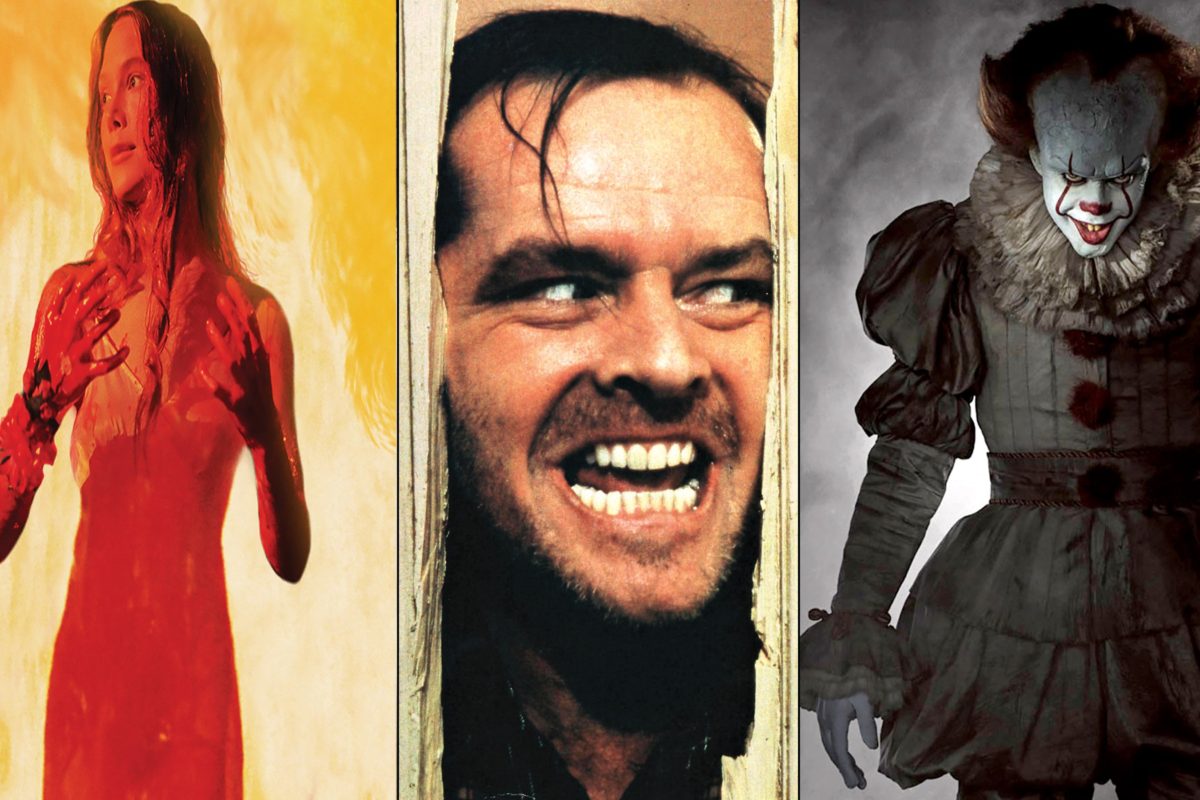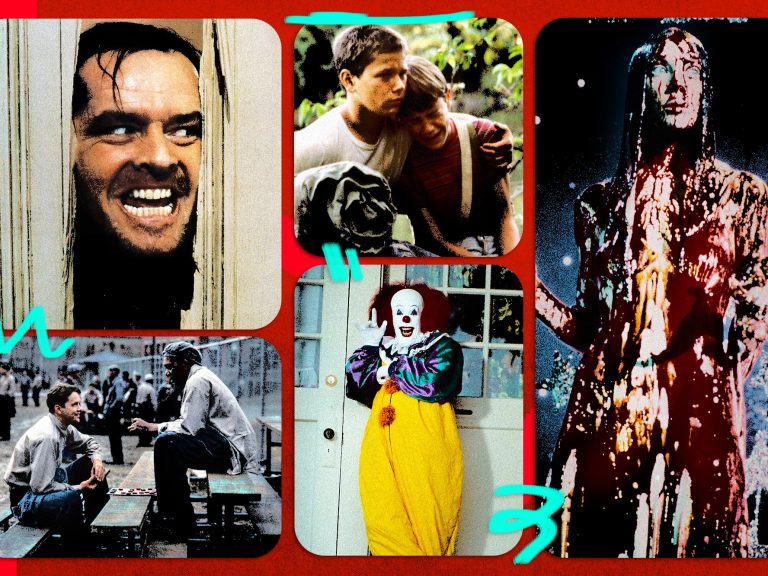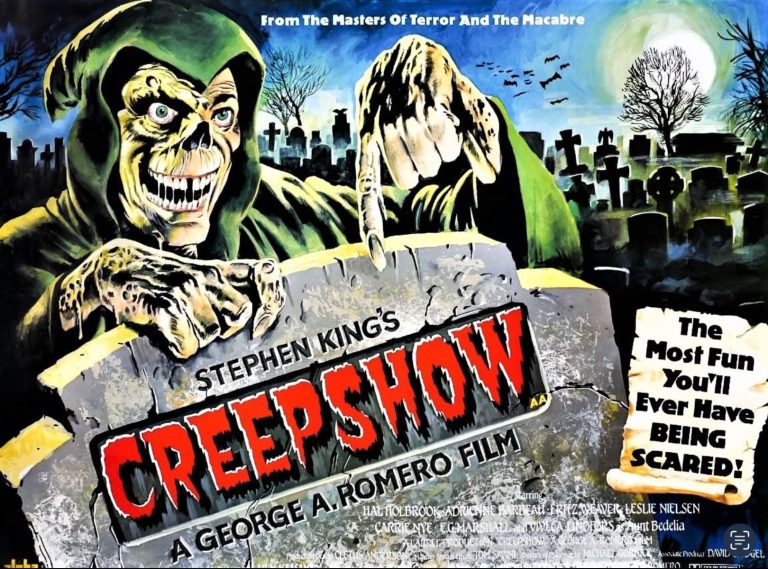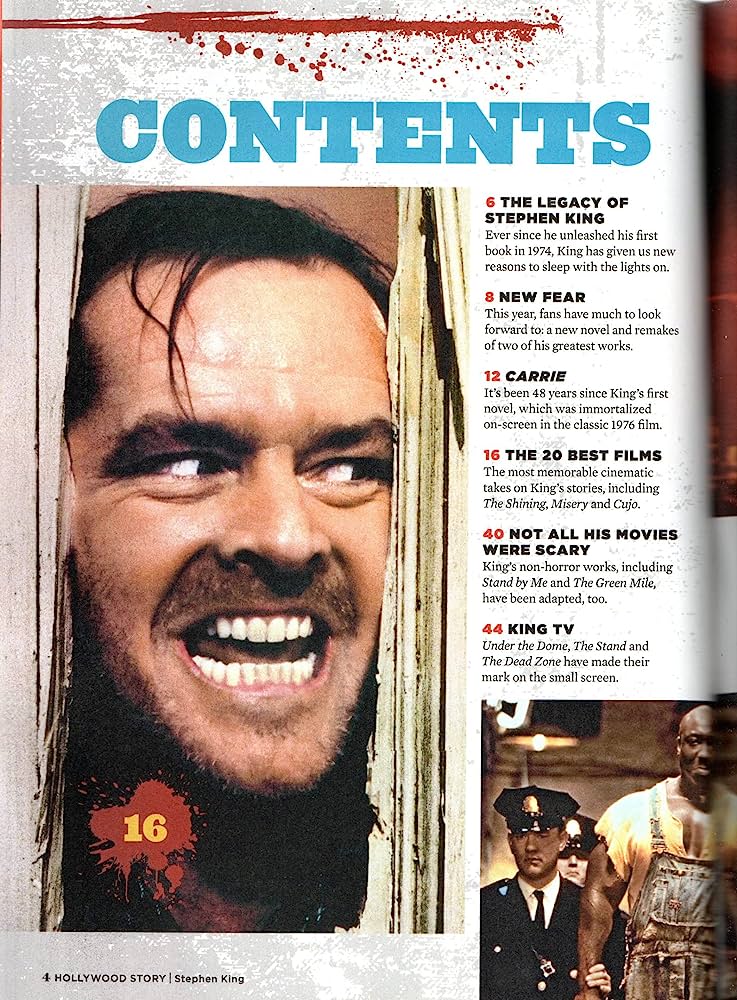Stephen King Movies: A Guide To Gory Practical Effects
If you’re a fan of Stephen King movies, then you know that they’re not for the faint of heart. From blood-soaked proms to possessed cars, King’s stories have been bringing nightmares to life on the big screen for decades. But have you ever wondered how they achieve those gory practical effects that make your skin crawl? Well, you’re in luck, because in this guide, we’ll take you behind the scenes of Stephen King movies and give you an inside look at the twisted world of practical effects.
When it comes to horror movies, practical effects are the name of the game. CGI may be all the rage these days, but there’s something special about seeing a gruesome creature or a terrifying transformation come to life right before your eyes. And that’s exactly what practical effects do. They use real props, prosthetics, and makeup to create the horrifying visuals that make Stephen King’s stories so memorable. So, if you’re ready to dive into the dark and twisted world of Stephen King movies and learn how they bring their nightmares to life, then grab your popcorn and let’s get started.

Stephen King Movies: A Guide to Gory Practical Effects
Stephen King movies are known for their captivating storytelling, rich characters, and of course, their gory practical effects. From terrifying monsters to gruesome deaths, these effects play a crucial role in bringing King’s chilling tales to life on the big screen. In this article, we will dive into the world of Stephen King movies and explore the fascinating world of gory practical effects.
The Importance of Practical Effects in Stephen King Movies
Practical effects have always been a cornerstone of horror movies, and Stephen King adaptations are no exception. While CGI has become more prevalent in recent years, practical effects continue to hold a special place in the hearts of horror fans. They provide a tangible and visceral experience that CGI often struggles to replicate.
In Stephen King movies, practical effects are used to create terrifying creatures, realistic injuries, and jaw-dropping gore. These effects not only enhance the visual impact of the film but also help to immerse the audience in the horrifying world of Stephen King’s imagination. Whether it’s a grotesque monster or a gruesome death scene, practical effects bring an authenticity that CGI often lacks.
The Artistry of Gory Practical Effects
Creating gory practical effects is a true art form that requires a skilled team of special effects artists. These artists use a variety of techniques and materials to achieve realistic and stomach-churning effects. From prosthetics and makeup to fake blood and animatronics, every detail is meticulously crafted to elicit maximum shock and horror.
One of the key benefits of practical effects is their ability to interact with the actors and the environment in real-time. This allows for more authentic performances and reactions, as the actors are truly immersed in the horrifying world of the film. Practical effects also have a physical presence that CGI often lacks, adding an extra layer of realism to the on-screen horrors.
The Evolution of Gory Practical Effects in Stephen King Movies
Over the years, the world of gory practical effects in Stephen King movies has evolved and advanced. From the iconic creature effects in “The Thing” to the jaw-dropping transformations in “The Fly,” filmmakers are constantly pushing the boundaries of what can be achieved with practical effects.
Advancements in materials and technology have allowed special effects artists to create even more realistic and gruesome effects. Silicone prosthetics, for example, have revolutionized the industry, allowing for incredibly detailed and lifelike creations. The use of animatronics and puppetry has also become more sophisticated, resulting in terrifyingly realistic monsters and creatures.
The Impact of Practical Effects on Audience Experience
One of the reasons why gory practical effects have such a lasting impact on viewers is their ability to evoke genuine reactions. When audiences see a realistic practical effect, whether it’s a severed limb or a grotesque monster, it triggers a visceral response. The shock, disgust, and fear that these effects elicit create a memorable and immersive experience for the audience.
In addition to their visual impact, practical effects also contribute to the overall atmosphere and tone of Stephen King movies. The gritty and tactile nature of these effects adds an extra layer of dread and unease, enhancing the horror and suspense of the story. Practical effects allow filmmakers to create a world that feels tangible and real, heightening the sense of danger and terror.
Iconic Gory Practical Effects in Stephen King Movies
Throughout the history of Stephen King adaptations, there have been numerous iconic gory practical effects that have left a lasting impression on audiences. From the terrifying clown in “It” to the nightmarish creatures in “The Mist,” these effects have become synonymous with the films themselves.
One notable example is the infamous “head in the microwave” scene from “Scanners.” This shocking practical effect, achieved through a combination of prosthetics and animatronics, has become one of the most memorable moments in horror movie history. It perfectly captures the blend of gore and shock that makes Stephen King movies so unsettling.
The Legacy of Gory Practical Effects in Stephen King Movies
The legacy of gory practical effects in Stephen King movies cannot be overstated. These effects have become an integral part of the cinematic experience, helping to create some of the most terrifying and memorable moments in horror film history. They continue to inspire and influence filmmakers, ensuring that the tradition of practical effects lives on.
In conclusion, gory practical effects play a vital role in bringing Stephen King’s chilling tales to life on the big screen. From their ability to evoke genuine reactions to their contribution to the overall atmosphere of the films, these effects have become an iconic element of the horror genre. As technology continues to advance, it will be fascinating to see how practical effects evolve and continue to terrify audiences in future Stephen King adaptations.
Key Takeaways: Stephen King Movies – A Guide to Gory Practical Effects
- Practical effects are physical special effects used in Stephen King movies to create gory and realistic scenes.
- These effects involve the use of prosthetics, makeup, animatronics, and other tangible materials.
- Stephen King movies often rely on practical effects to enhance the horror and suspense elements.
- Practical effects add authenticity and a visceral quality to the gory scenes, making them more believable and impactful.
- From gruesome monsters to bloody injuries, practical effects in Stephen King movies bring the terrifying visions to life.
Frequently Asked Questions
Q: What are practical effects in Stephen King movies?
Practical effects in Stephen King movies refer to the use of physical props, makeup, and special effects techniques to create realistic and gory scenes. These effects are often achieved without the use of computer-generated imagery (CGI) and rely on practical methods such as prosthetics, animatronics, and clever camera tricks. The emphasis on practical effects adds a tangible and visceral quality to the horror and gore that is characteristic of Stephen King’s stories.
By using practical effects, filmmakers are able to create memorable and visually striking moments that stay with the audience long after the movie has ended. Whether it’s a gruesome transformation or a shocking death scene, practical effects enhance the authenticity and impact of the horror elements in Stephen King movies.
Q: Which Stephen King movies are known for their gory practical effects?
Several Stephen King movies have become infamous for their gory practical effects. One notable example is “The Shining” directed by Stanley Kubrick, which features iconic scenes such as the elevator of blood and the gruesome murder with an axe. Another notable film is “It” directed by Andy Muschietti, where practical effects were used to bring Pennywise the clown to life in all his terrifying glory.
Other Stephen King movies that showcase impressive practical effects include “Carrie” directed by Brian De Palma, “Misery” directed by Rob Reiner, and “Pet Sematary” directed by Mary Lambert. These films demonstrate the creativity and skill of the special effects teams in crafting realistic and chilling moments that leave a lasting impression on viewers.
Q: How do practical effects enhance the horror experience in Stephen King movies?
Practical effects play a crucial role in enhancing the horror experience in Stephen King movies. By using physical props and makeup effects, filmmakers are able to create a sense of realism that engages the audience on a visceral level. The use of practical effects adds a tactile quality to the horror elements, making them more tangible and unsettling.
Furthermore, practical effects allow for practicality and spontaneity on set. The actors can react to real props and physical effects, which adds to their performance and creates a more authentic sense of fear and suspense. Practical effects also have a timeless quality that can withstand the test of time, as they are not reliant on rapidly advancing CGI technology.
Q: What are some iconic practical effects scenes in Stephen King movies?
Stephen King movies are known for their memorable practical effects scenes that have become iconic in the horror genre. One such scene is the “spider-walk” sequence in “The Exorcist III” directed by William Peter Blatty, which features a contorted and grotesque creature crawling down a staircase. This scene is chillingly effective due to the practical effects used to bring the creature to life.
Another iconic practical effects scene is the transformation of the werewolf in “Silver Bullet” directed by Daniel Attias. Through the use of prosthetics and animatronics, the film creates a horrifying and visceral transformation that remains etched in the minds of viewers. These scenes showcase the power of practical effects in creating memorable and terrifying moments in Stephen King movies.
Q: How have practical effects evolved in modern Stephen King adaptations?
With the advancements in technology, practical effects in modern Stephen King adaptations have embraced a combination of traditional techniques and CGI. Filmmakers now have access to more sophisticated prosthetics, animatronics, and makeup effects, which allow for even more realistic and detailed practical effects.
However, CGI is often used to enhance the practical effects, rather than replace them entirely. This blending of practical and digital effects ensures that the horror elements retain a grounded and tactile quality while also taking advantage of the possibilities offered by CGI. This evolution in practical effects has resulted in visually stunning and terrifying scenes in recent Stephen King adaptations, keeping the tradition of practical effects alive in the modern era.
Stephen King’s 1408 | Full Movie
Final Thoughts: Stephen King Movies and the Art of Gory Practical Effects
As we wrap up our journey through the world of Stephen King movies and their masterful use of gory practical effects, one thing becomes abundantly clear: these films have left an indelible mark on the horror genre. From the chilling suspense of “The Shining” to the bone-chilling terror of “IT,” Stephen King’s stories have captivated audiences for decades. But it’s not just the gripping narratives and memorable characters that make these movies stand out. It’s the incredible craftsmanship behind the gory practical effects that truly bring King’s nightmarish visions to life.
Throughout this guide, we’ve explored the gruesome and macabre techniques used to create the blood, guts, and gore that make these films so memorable. From expertly crafted prosthetics to realistic animatronics, the dedication and artistry of the special effects teams are evident in every frame. These practical effects not only enhance the horror and suspense, but they also provide a tangible and visceral experience for the audience, immersing them in King’s terrifying worlds.
In conclusion, Stephen King movies are a testament to the power of practical effects in the realm of horror cinema. They remind us that even in an age of advanced computer-generated imagery, there’s something undeniably captivating about seeing tangible, physical effects on the screen. So, the next time you find yourself watching a Stephen King adaptation, take a moment to appreciate the artistry and skill behind the gory practical effects that make these films truly unforgettable.






